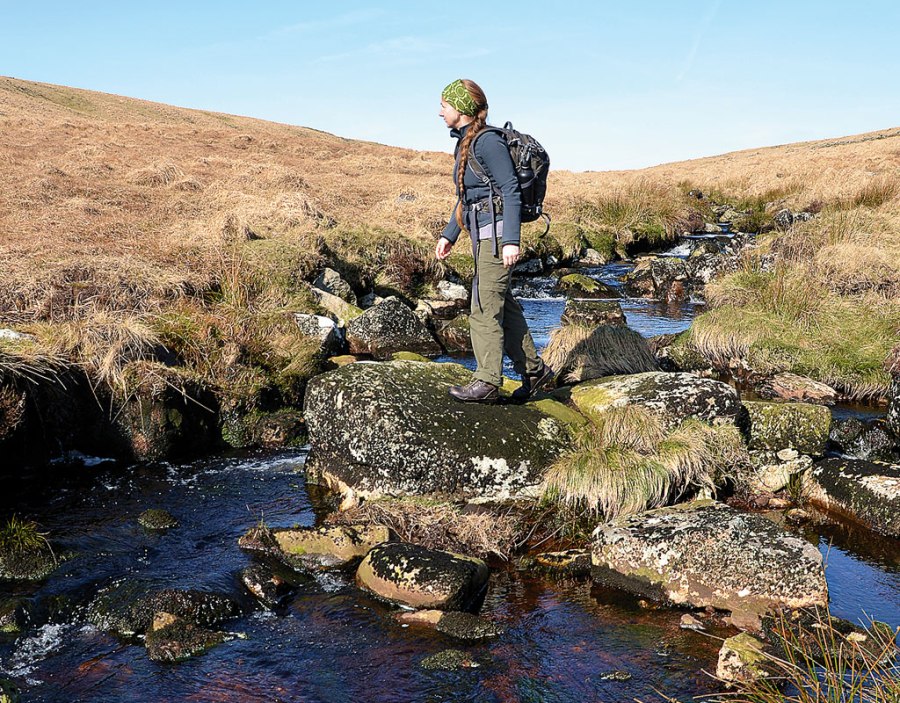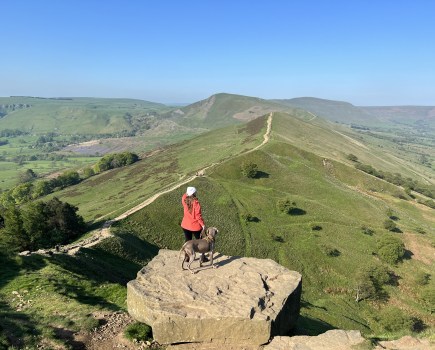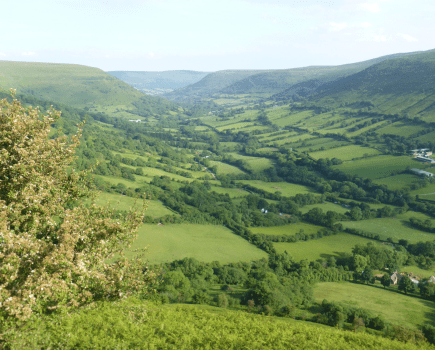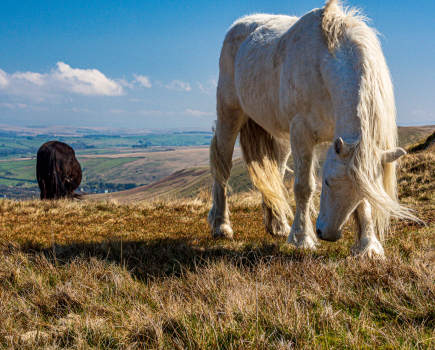Tim Gent walks from one fine tor to another in Dartmoor
Dr Brown’s wife was so beautiful that in order to keep her safe from the advances of numerous admirers her troubled husband resorted to building them both a house in as remote a part of Dartmoor as he could find. Or so local legend would have us believe. In truth, Benjamin Brown, Doctor of Physics, was no more than a budding farmer, plagued by bad luck or bad judgement. Presumably filled with high hopes, Brown built his farmhouse in 1810, but not alas before obtaining the all important lease from the Duchy of Cornwall. This over-enthusiasm evidently irritated the Duchy, which responded by setting a rent he simply couldn’t afford. Abandoned only two years later, the farm changed hands repeatedly, soon crumbling back into the folds of its isolated south-facing hillslope.
Despite Brown’s intention to build an access road, none was laid. Any sortie to survey the evocative remains requires some typical, but rather grand, Dartmoor trudging. Setting out from a handy car park north of the road at Two Bridges, an enjoyable upland circuit began by heading up and out along a broad tor-studded ridge. A couple of fine granite walls protect the approach, but are pierced by convenient gateways. The last boundary before reaching Littaford Tors is straddled by a substantial stile/ladder. From now on, as with all the best Dartmoor walks, one fine tor led on to another, and Longaford Tor provided some spectacular views over the moor.
Following a slightly scrambly descent, and Higher White Tor was up next. Flat-topped and fairly modest, this protrusion made up for this by offering a fine sight of our destination, off to the north beyond Lower White Tor – and a rather boggy valley bottom. In fact, there is little of Brown’s short-lived farmhouse left – just some tumbled mosscovered walls and the outline of a yard or vegetable plot. But lunch eaten while sat on one of these walls gave time to contemplate the commitment, and perhaps foolhardiness, of that two-hundred year old attempt to set up home at quite such an out of the way spot. It was wonderfully quiet though.
Rough Tor, beyond a river crossing, was perhaps a bit of an anticlimax, not exactly living up to the rugged promise of its name. Beardown Tors, a couple of kilometres to the south, compensated for this, providing an excellent chance for a gentle
exploratory clamber.
A drop downhill to the south-east lead to Devonport leat. A rather more successful project than poor Dr Brown’s farm, the leat, built in 1790, provided water for the dockyard way off to the south. It still bubbles along sweetly, and on a warm day the easy path alongside the gentle flow, then through the shady wood above Beardown Farm, was very welcome. As was the final riverside route under trees to our waiting van.
(A small part of the walk goes through MoD land. Call 0800 458 4868 before setting off).
ROUTE DESCRIPTION
- Leave the track to the N of the car park almost immediately to meet the ridge at Littaford Tors.
- Continue N to Longaford and then Higher White Tors.
- Cross the wall to the N to pass Lower White Tor, crossing boggy ground before Brown’s House.
- Head W to cross West Dart River before climbing to Rough Tor.
- Contour SW around the valley head before heading S to Beardown Tors.
- Drop downhill to the SE to find a small bridge over Devonport Leat.
- Follow the leat-side path S through coniferous woodland, then W around Beardown Farm to the road.
Tim Gent walks from one fine tor to another in Dartmoor
Dr Brown’s wife was so beautiful that in order to keep her safe from the advances of numerous admirers her troubled husband resorted to building them both a house in as remote a part of Dartmoor as he could find. Or so local legend would have us believe. In truth, Benjamin Brown, Doctor of Physics, was no more than a budding farmer, plagued by bad luck or bad judgement. Presumably filled with high hopes, Brown built his farmhouse in 1810, but not alas before obtaining the all important lease from the Duchy of Cornwall. This over-enthusiasm evidently irritated the Duchy, which responded by setting a rent he simply couldn’t afford. Abandoned only two years later, the farm changed hands repeatedly, soon crumbling back into the folds of its isolated south-facing hillslope.
Despite Brown’s intention to build an access road, none was laid. Any sortie to survey the evocative remains requires some typical, but rather grand, Dartmoor trudging. Setting out from a handy car park north of the road at Two Bridges, an enjoyable upland circuit began by heading up and out along a broad tor-studded ridge. A couple of fine granite walls protect the approach, but are pierced by convenient gateways. The last boundary before reaching Littaford Tors is straddled by a substantial stile/ladder. From now on, as with all the best Dartmoor walks, one fine tor led on to another, and Longaford Tor provided some spectacular views over the moor.
Following a slightly scrambly descent, and Higher White Tor was up next. Flat-topped and fairly modest, this protrusion made up for this by offering a fine sight of our destination, off to the north beyond Lower White Tor – and a rather boggy valley bottom. In fact, there is little of Brown’s short-lived farmhouse left – just some tumbled mosscovered walls and the outline of a yard or vegetable plot. But lunch eaten while sat on one of these walls gave time to contemplate the commitment, and perhaps foolhardiness, of that two-hundred year old attempt to set up home at quite such an out of the way spot. It was wonderfully quiet though.
Rough Tor, beyond a river crossing, was perhaps a bit of an anticlimax, not exactly living up to the rugged promise of its name. Beardown Tors, a couple of kilometres to the south, compensated for this, providing an excellent chance for a gentle
exploratory clamber.
A drop downhill to the south-east lead to Devonport leat. A rather more successful project than poor Dr Brown’s farm, the leat, built in 1790, provided water for the dockyard way off to the south. It still bubbles along sweetly, and on a warm day the easy path alongside the gentle flow, then through the shady wood above Beardown Farm, was very welcome. As was the final riverside route under trees to our waiting van.
(A small part of the walk goes through MoD land. Call 0800 458 4868 before setting off).
ROUTE DESCRIPTION
- Leave the track to the N of the car park almost immediately to meet the ridge at Littaford Tors.
- Continue N to Longaford and then Higher White Tors.
- Cross the wall to the N to pass Lower White Tor, crossing boggy ground before Brown’s House.
- Head W to cross West Dart River before climbing to Rough Tor.
- Contour SW around the valley head before heading S to Beardown Tors.
- Drop downhill to the SE to find a small bridge over Devonport Leat.
- Follow the leat-side path S through coniferous woodland, then W around Beardown Farm to the road.








